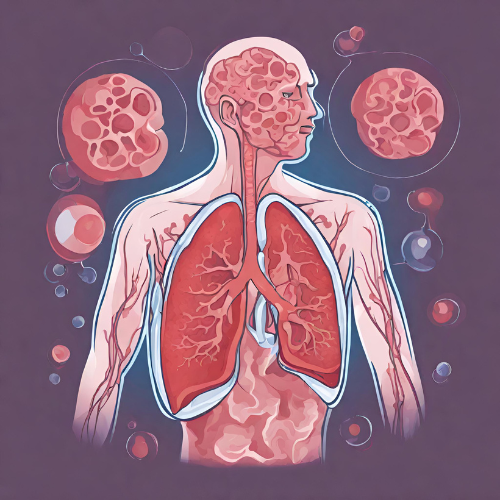1. Understanding Pneumonia: Pneumonia is an infection that inflames the air sacs in one or both lungs, causing them to fill with fluid or pus. This condition can be caused by bacteria, viruses, fungi, or other microorganisms, and it ranges in severity from mild to life-threatening.
2. Types of Pneumonia:
- Community-acquired pneumonia (CAP): Occurs outside of healthcare facilities and is often caused by bacteria such as Streptococcus pneumoniae, Haemophilus influenzae, or viruses like influenza or respiratory syncytial virus (RSV).
- Hospital-acquired pneumonia (HAP): Develops at least 48 hours after admission to a hospital and is often caused by bacteria that are resistant to antibiotics.
- Ventilator-associated pneumonia (VAP): A type of HAP that occurs in patients who are on mechanical ventilation.
3. Symptoms of Pneumonia:
- Cough, often with phlegm (may be green or yellow)
- Fever, sweating, and shaking chills
- Shortness of breath, rapid breathing, or difficulty breathing
- Chest pain that worsens when coughing or breathing deeply
- Fatigue and weakness
- Nausea, vomiting, or diarrhea
4. Causes of Pneumonia: Pneumonia can be caused by various infectious agents, including:
- Bacteria: Streptococcus pneumoniae, Haemophilus influenzae, Legionella pneumophila, Staphylococcus aureus, etc.
- Viruses: Influenza virus, respiratory syncytial virus (RSV), adenovirus, etc.
- Fungi: Pneumocystis jirovecii (common in people with weakened immune systems), Candida spp., etc.
5. Risk Factors for Pneumonia:
- Age (young children and the elderly are at higher risk)
- Weakened immune system (due to illness, chemotherapy, or immunosuppressive medications)
- Chronic lung diseases (such as COPD or asthma)
- Smoking
- Hospitalization or recent surgery
- Living in a long-term care facility
- Malnutrition or poor overall health
6. Diagnosis of Pneumonia:
- Physical examination: Healthcare providers may listen to the lungs with a stethoscope to check for abnormal sounds, such as crackling or wheezing.
- Chest X-ray: This imaging test helps visualize the lungs and identify areas of infection or inflammation.
- Blood tests: Blood cultures and other lab tests can help identify the causative organism and determine the severity of the infection.

7. Pharmacokinetics (PK) and Pharmacodynamics (PD):
- Antibiotic therapy: PK and PD studies focus on the absorption, distribution, metabolism, and excretion of antibiotics used to treat pneumonia, such as penicillin, amoxicillin, azithromycin, levofloxacin, and ceftriaxone. These antibiotics work by targeting the specific bacteria responsible for the infection and inhibiting their growth.
8. Pharmacological Treatment of Pneumonia:
- Antibiotics: Treatment depends on the suspected or identified cause of pneumonia. Antibiotics may be prescribed for bacterial pneumonia, while antiviral or antifungal medications may be used for viral or fungal pneumonia, respectively.
- Antipyretics: Over-the-counter medications like acetaminophen or ibuprofen can help reduce fever and relieve discomfort.
9. Non-pharmacological Treatment:
- Rest: Adequate rest is essential for allowing the body to recover from pneumonia.
- Hydration: Drinking plenty of fluids helps prevent dehydration and loosens mucus in the lungs.
- Oxygen therapy: In severe cases, supplemental oxygen may be necessary to ensure adequate oxygenation of the blood.
10. Conclusion: Pneumonia is a common and potentially serious respiratory infection that can affect people of all ages. Prompt diagnosis and appropriate treatment, including antibiotics when necessary, are essential for managing pneumonia and preventing complications. Additionally, preventive measures such as vaccination, good hand hygiene, and avoiding tobacco smoke can help reduce the risk of developing pneumonia. If you experience symptoms of pneumonia, such as persistent cough, fever, or difficulty breathing, it is essential to seek medical attention for proper evaluation and treatment.




